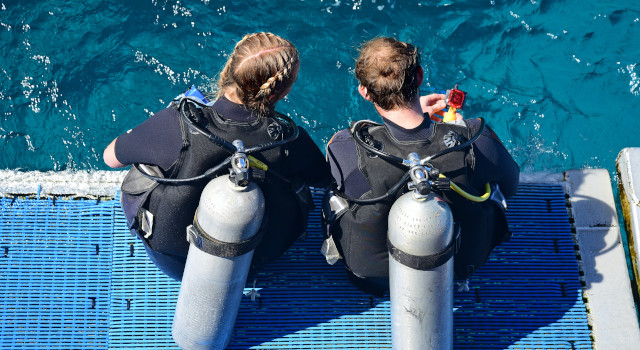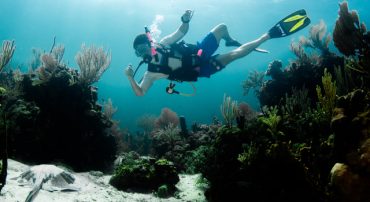 A gone-fishing portfolio is a portfolio of just a few stocks which should weather the ups and downs of the market fairly well while only rebalancing twice a year. We recommend a gone-fishing portfolio for people who are just getting started with investing.
A gone-fishing portfolio is a portfolio of just a few stocks which should weather the ups and downs of the market fairly well while only rebalancing twice a year. We recommend a gone-fishing portfolio for people who are just getting started with investing.
For those who would like assistance with investing, rebalancing, and managing their portfolio, our Do-It-Yourself service level may be a better fit.
For people with more invested assets or who are in or near retirement, we recommend professional management and financial planning. For that reason, our calculators do not make recommendations beyond age 70.
Our standard gone-fishing portfolio can be used at any custodian. It is the best for custodians who have no-transactions fees for all Exchange-Traded Funds (ETFs).
For custodians who have trading costs on ETFs, we recommend designing a portfolio using that custodian’s limited no-transaction-fee list. Currently as of the writing of this article, the only custodian-specific portfolio we have crafted is for Vanguard as they still have ETF transactions fees for non-Vanguard funds. However, if you’d like us to create one for your custodian, you can send us your request through our Contact page.
If you are just getting started with investing and have not yet selected a custodian, we recommend opening accounts with Charles Schwab. Charles Schwab now has no transaction fees for U.S. security trades and has also moved to allowing account opens with no minimum deposit. For these reasons, we would recommend selecting Charles Schwab as your custodian and using the Default Gone-Fishing Portfolio.
Here are all of our gone-fishing portfolios so far for 2022:
Marotta’s 2022 Gone-Fishing Portfolio Calculator
This gone-fishing portfolio is our default portfolio which can be used at any custodian.
Marotta’s 2022 Vanguard Gone-Fishing Portfolio Calculator
We recommend this gone-fishing portfolio for accounts hosted at Vanguard.
A Note on the Stock-Bond Mix
Last year, we adjusted the age-appropriate asset allocation. Instead of a more gradual glide path between stocks and bonds, we acknowledged that most of your portfolio should be invested in stocks, while the next seven years of safe spending should be invested in bonds.
This change made the age-appropriate asset allocation for a 40-year-old 100% stocks rather than 15% bonds and 85% stocks. Assuming your portfolio withdrawals only start after retirement, an age-65 retirement needs a bond allocation after age 50.
If you are retiring sooner or later than age 65, we recommend you consider getting professional management to design your asset allocation.
A Review of 2022 Changes
| 2021 | 2022 | Change | |
|---|---|---|---|
| SPDR MSCI USA StrategicFactors ETF (QUS) | 12.00% | 7.80% | -4.20% |
| Vanguard Mid Cap Value ETF (VOE) | 9.00% | 8.90% | -0.10% |
| Vanguard Small Cap Value ETF (VBR) | 6.00% | 9.70% | +3.70% |
| Vanguard Information Technology Index ETF (VGT) | 12.00% | 10.60% | -1.40% |
| Vanguard Health Care Index ETF (VHT) | 12.00% | 9.50% | -2.50% |
| Vanguard Consumer Staples Index ETF (VDC) | 9.00% | 6.30% | -2.70% |
| Franklin FTSE Switzerland ETF (FLSW) | 6.10% | 6.50% | +0.40% |
| iShares MSCI New Zealand ETF (ENZL) | 6.00% | 6.50% | +0.50% |
| iShares MSCI Denmark ETF (EDEN) | 4.30% | 6.50% | +2.20% |
| Franklin FTSE United Kingdom ETF (FLGB) | 4.30% | 0.00% | -4.30% |
| iShares MSCI Singapore ETF (EWS) | 0.00% | 6.50% | +6.50% |
| Vanguard Emerging Markets ETF (VWO) | 13.30% | 17.20% | +3.90% |
| Vanguard Real Estate ETF (VNQ) | 6.00% | 4.00% | -2.00% |
U.S. Stock Changes
For this year’s portfolios, we reduced our Resource Stock allocation, represented by Vanguard Real Estate ETF (VNQ), from 6% to 4% to better match what we recommend for our managed portfolios and our efficient frontier analysis on the topic.
Also in keeping with the similar movement that we made in our managed portfolios, we changed our U.S. Stock strategy by reducing Technology and Large Cap and moving more into Mid and Small Cap Value. We made this movement in response to rising interest rates and the current overvaluation of U.S. Technology.
Our gone-fishing portfolios have a more static asset allocation and do not reflect any of the additional dynamic tilt which leans away from large cap growth this month. We debated on whether we should include this additional underweight in our Gone-Fishing Portfolios but elected instead to use our static allocations.
Increasingly, large cap growth has become overvalued with most of the returns for the S&P 500 coming from just a handful of stocks. This year, we don’t think anyone will complain because the large cap fund VOO and the Technology fund VGT performed the best among all the U.S. stock holdings.
Last year, those who concentrated their allocations to these two funds saw the best returns. For next year, we may be glad that we don’t have everything in these two stocks. Vanguard’s own December 2021 Market Perspectives projected a nominal 10-year annualized return for U.S. growth between –0.9% and 1.1%.
In addition to lowering the allocation to large cap in both portfolios, for our 2022 Vanguard Gone-Fishing portfolio, we also switched our large cap fund from the large cap growth of VOO to the large cap value of Vanguard Value ETF (VTV).
Foreign Stock Changes
For Foreign Stocks, United Kingdom had its overall freedom score drop significantly in 2022 so we elected to replace it in our Gone-Fishing portfolio allocations with Singapore. We selected Singapore for its high economic freedom as well as its low correlation to other free countries included in our allocation. Our hope is that this low correlation provides more diversification. If you elect to rebalance, it may also provide a higher potential for a rebalancing bonus.
We still have United Kingdom in our managed portfolio allocations. If you are net contributing to your Gone-Fishing Portfolio, you could consider using new contributions to purchase another free country from our overall Freedom Investing strategy rather than liquidating previous holdings to conform to our new portfolio’s recommendation. While this decision will move your portfolio allocation towards more funds, we believe our full Freedom Investing strategy is better than only selecting a handful of countries. We only limit our fund selection here in order to keep the portfolio simple, in keeping with the spirit of a Gone-Fishing Portfolio.
We also changed the Foreign Stock allocations from a cap weight to an equal weight. This is in keeping with our latest findings in foreign stock analysis which suggests that an equal weight in developed markets performs better. As of the publication of this article, our explanation of these new findings is still pending publication. To ensure you don’t miss it, subscribe to our newsletter.
A Review of 2021 Returns
For the Gone-Fishing Portfolios, we have used the 100% Stock allocation invested at the start of the relevant period and permitted to drift throughout the period. We have used returns ending December 31, 2021 as reported by Morningstar.
Overall Returns
| Ticker | 3-Month | 6-Month | 9-Month | 1-Year | |
|---|---|---|---|---|---|
| iShares MSCI ACWI | ACWI | 6.98% | 5.63% | 13.14% | 18.67% |
| All-Stock Default Gone-Fishing | 8.03% | 6.77% | 14.54% | 19.75% | |
| All-Stock Vanguard Gone-Fishing | 7.70% | 6.40% | 13.88% | 20.42% |
Without rebalancing, the all stock Marotta 2021 Gone-Fishing Portfolio had a return of 19.75% and the all stock Marotta Vanguard 2021 Gone-Fishing Portfolio had a return of 20.42%.
For comparison, iShares MSCI ACWI ETF (ACWI) saw a 2021 return of 18.67%.
MSCI ACWI All Cap represents every stock in the world at exactly its cap weight. Any deviation from this index is a choice of investment strategies. Sometimes those choices will increase or reduce risk. They may also increase or reduce returns.
This past year our choices increased returns for both our default and Vanguard portfolios.
U.S. Stock Returns
| Allocation Vanguard | Default |
Ticker | 3-Month | 6-Month | 9-Month | 1-Year | ||
|---|---|---|---|---|---|---|---|
| Vanguard Total Stock Market | VTI | 9.11% | 9.08% | 17.95% | 25.67% | ||
| Default Gone-Fishing U.S. Stock | 10.71% | 10.57% | 19.11% | 26.69% | |||
| Vanguard Gone-Fishing U.S. Stock | 10.86% | 10.85% | 19.45% | 27.06% | |||
| Vanguard S&P 500 | 12.00% | 0% | VOO | 11.09% | 11.70% | 21.07% | 28.78% |
| SPDR® MSCI USA StrategicFactors | 0% | 12.00% | QUS | 10.29% | 10.14% | 19.19% | 26.73% |
| Vanguard Mid-Cap Value | 9.00% | VOE | 8.30% | 8.05% | 13.11% | 28.76% | |
| Vanguard Small-Cap Value | 6.00% | VBR | 6.37% | 4.07% | 9.54% | 28.06% | |
| Vanguard Information Technology | 12.00% | VGT | 14.39% | 15.36% | 28.51% | 30.45% | |
| Vanguard Health Care | 12.00% | VHT | 8.13% | 8.53% | 17.58% | 20.56% | |
| Vanguard Consumer Staples | 9.00% | VDC | 12.24% | 10.85% | 14.15% | 17.61% | |
| Vanguard Real Estate | 6.00% | VNQ | 15.03% | 15.74% | 29.17% | 40.52% | |
Note: We have included Vanguard Real Estate in our U.S. Stock reporting here for our Gone-Fishing portfolios. In our full Asset Allocation Design though, we typically section real estate ETFs into a separate asset class of Resource Stocks and report on it separately. That being said, this U.S. Stock portfolio is fairly compared to Vanguard Total Stock Market (VTI) because VTI includes U.S. REITs.
The U.S. Stock portion of our 2021 Gone-Fishing portfolio also saw returns higher than its benchmark. Without rebalancing, the U.S. Stock portion of the Marotta 2021 Gone-Fishing Portfolio had a return of 26.69% and the U.S. Stock portion of the Marotta Vanguard 2021 Gone-Fishing Portfolio had a return of 27.06%.
This can be compared to Vanguard Total Stock Market ETF (VTI), every stock in the U.S. exactly at its cap weight, which saw a 1-year return of 25.67%.
The outperformance of our Vanguard portfolio over our default portfolio can be attributed to the outperformance of VOO’s large cap growth compared to QUS’s large cap value.
As we said before, those who concentrated their allocations in large cap growth saw the best returns last year. For next year, we may be glad that we don’t have everything in these stocks. Vanguard’s own December 2021 Market Perspectives projects a nominal 10-year annualized return for U.S. growth between –0.9% and 1.1%.
Foreign Returns
| Allocation Vanguard | Default |
Ticker | 3-Month | 6-Month | 9-Month | 1-Year | ||
|---|---|---|---|---|---|---|---|
| iShares MSCI ACWI ex US | ACWX | 2.00% | -1.72% | 3.51% | 7.68% | ||
| Full Freedom Investing Strategy | 2.23% | -1.25% | 4.11% | 7.89% | |||
| Default Gone-Fishing Foreign Stock | 2.83% | -0.60% | 5.67% | 6.28% | |||
| Vanguard Gone-Fishing Foreign Stock | 1.58% | -2.23% | 3.07% | 7.52% | |||
| Vanguard FTSE Developed Markets | 20.40% | 0.00% | VEA | 2.70% | 1.05% | 6.85% | 11.67% |
| Franklin FTSE Switzerland | 0.00% | 6.10% | FLSW | 13.05% | 8.94% | 22.62% | 20.82% |
| Franklin FTSE United Kingdom | 0.00% | 4.30% | FLGB | 4.94% | 3.97% | 9.50% | 17.15% |
| iShares MSCI Denmark | 0.00% | 4.30% | EDEN | 3.68% | 2.89% | 15.68% | 14.80% |
| iShares MSCI New Zealand | 0.00% | 6.00% | ENZL | -3.19% | -1.55% | -3.11% | -11.38% |
| Vanguard FTSE Emerging Markets | 13.60% | 13.30% | VWO | -0.11% | -7.14% | -2.60% | 1.30% |
Without rebalancing, the Foreign Stock portion of the Marotta 2021 Gone-Fishing Portfolio had a return of 6.28% and the Foreign Stock portion of the Marotta Vanguard 2021 Gone-Fishing Portfolio had a return of 7.52%.
This is where our Vanguard and default Gone-Fishing portfolios differ the most. Our Vanguard Gone-Fishing portfolio has only one fund for developed markets, Vanguard FTSE Developed Markets ETF (VEA). Meanwhile, our default Gone-Fishing portfolio features a handful of the countries from our larger Freedom Investing strategy.
Last year, we simply picked off our top four country allocations of Switzerland, New Zealand, Denmark, and the United Kingdom. From those, Switzerland, Denmark, and the United Kingdom performed better than developed markets overall while New Zealand performed significantly worse, pulling down the portfolio. You always have an investment to complain about and an investment that is your darling in a diversified portfolio. This past year, we can complain about New Zealand.
These returns can be compared to iShares MSCI ACWI ex US ETF (ACWX), every stock in the foreign world exactly at its cap weight, which saw a 1-year return of 7.68%. It can also be compared to our full Freedom Investing strategy (a different model which represents our static targets), which would have had a 1-year return of 7.89%. Our Freedom Investing Strategy outperformed thanks to its overweight to Taiwan.
Reminder: Stay the Course
We have a saying, “It is always a good time to have a balanced portfolio.” While we almost had a Bear Market in 2018 followed by the longest economic expansion in 2019, 2020 and 2021 were good markets. While good markets often precede bad markets, they more often precede good markets.
Regardless of what happens, we believe volatile markets are the times when it is most important to stay invested.
It is easy to get out of the markets when they look risky but difficult to know when to get back in.
We believe that it is better to be invested in the markets at the wrong time than trying to time the markets.
Photo by Laya Clode on Unsplash. Returns data gathered from Morningstar Advisor Workstation.

